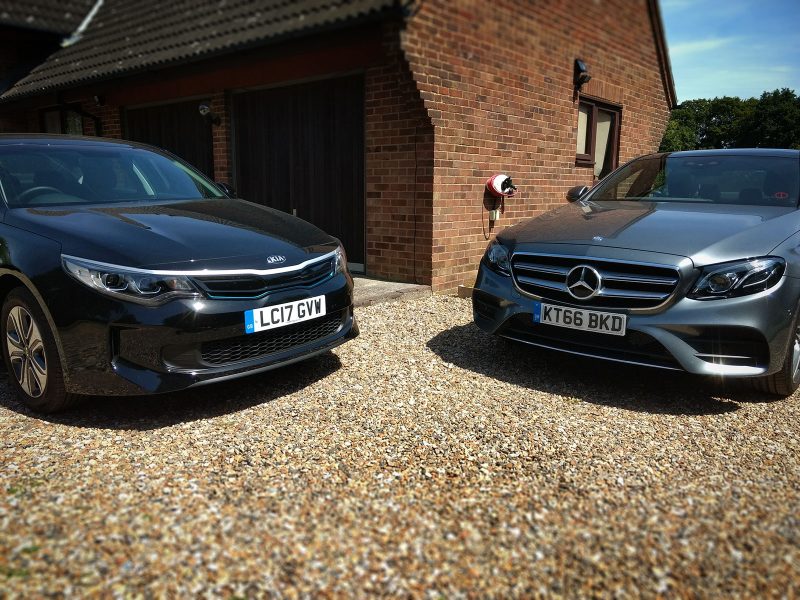Another week, another improvement in fuel economy for the Kia Optima PHEV (‘Optima Prime’). Since the week before, plenty of short trips and warmer weather meant that electric-only mode has been deployed on pretty well every journey I’ve done in the last week. It’s the way the cookie crumbles, so to speak.
Part of the reason is that, like most motoring writers, I’ve had the use of another car this last week – the Mercedes E 350 e. Nonetheless, Optima Prime has proven itself to be the far superior plug-in hybrid and this is for several reasons.
Firstly; range. While the Mercedes officially can do 21-miles, it reports 16 when fully charged and only provides a real-world 8-miles. Whereas, the Kia officially does 32, reports 31 and actually achieves 31-real-world-miles. That’s a marked and impressive difference, especially considering the two cars both work using similar technology; i.e. the electric motor drives through the gearbox. The Kia has a 10kWh battery, while the Merc has just 6.2kWh. Real-world miles/kWh works out as 3.1miles/kWh for the Kia and a pitiful 1.29miles/kWh for the Mercedes-Benz.
Unfortunately, this also means that it is actually more expensive to drive electric than petrol miles in the Mercedes-Benz. A little maths, for those who’re interested… 16 pence per unit electricity fills the Merc’s 6.2kWh battery for £0.99 and you can travel 8-miles (12 pence/mile). At 44mpg (the average obtained over a week of varied driving) translates as 1-litre of fuel you can travel 9.69-miles, which currently costs £1.12 at my local forecourt. So, to travel 8-petrol miles that’s 92 pence (11 pence/mile).
That’s right, it is cheaper to run on petrol than electricity in the Mercedes. And that’s a huge shame.
Returning to the Kia and applying the same mathematical logic, electric miles cost 5 pence/mile and petrol miles – so far – have cost 6.8 pence/mile. While that doesn’t seem like a huge difference, the Kia is more than half the price of the Mercedes to run in electric mode. Those same 8-miles in the Kia cost 41 pence compared to 99 in the Merc.
However, in fairness to both cars they’re not really designed to be run in these linear modes, ‘petrol or electric’ and should instead be, ‘petrol AND electric’. But this is all the more easy in the Optima PHEV, which can run 387.5% further on electric power.
Nevertheless, regarding how they drive the Optima PHEV offers by far the superior electric experience. Whereas the Mercedes feels heavy and slow off the mark, the Kia is keen to shoot forwards like a rocket from the get-go, which makes it less tiring and more predictable to drive in traffic. Likewise, the Mercedes – despite its haptic feedback throttle pedal – is all-too keen to start its petrol engine, whereas the Kia stubbornly sticks in EV-Mode unless you really stamp the throttle.
They’re chalk and cheese in many ways and of course, these two cars don’t compete against each other and purport to offer different things to different customers, but in terms of their plug-in hybrid abilities, the Kia is superior without question.
And I still have half a tank of petrol remaining.

